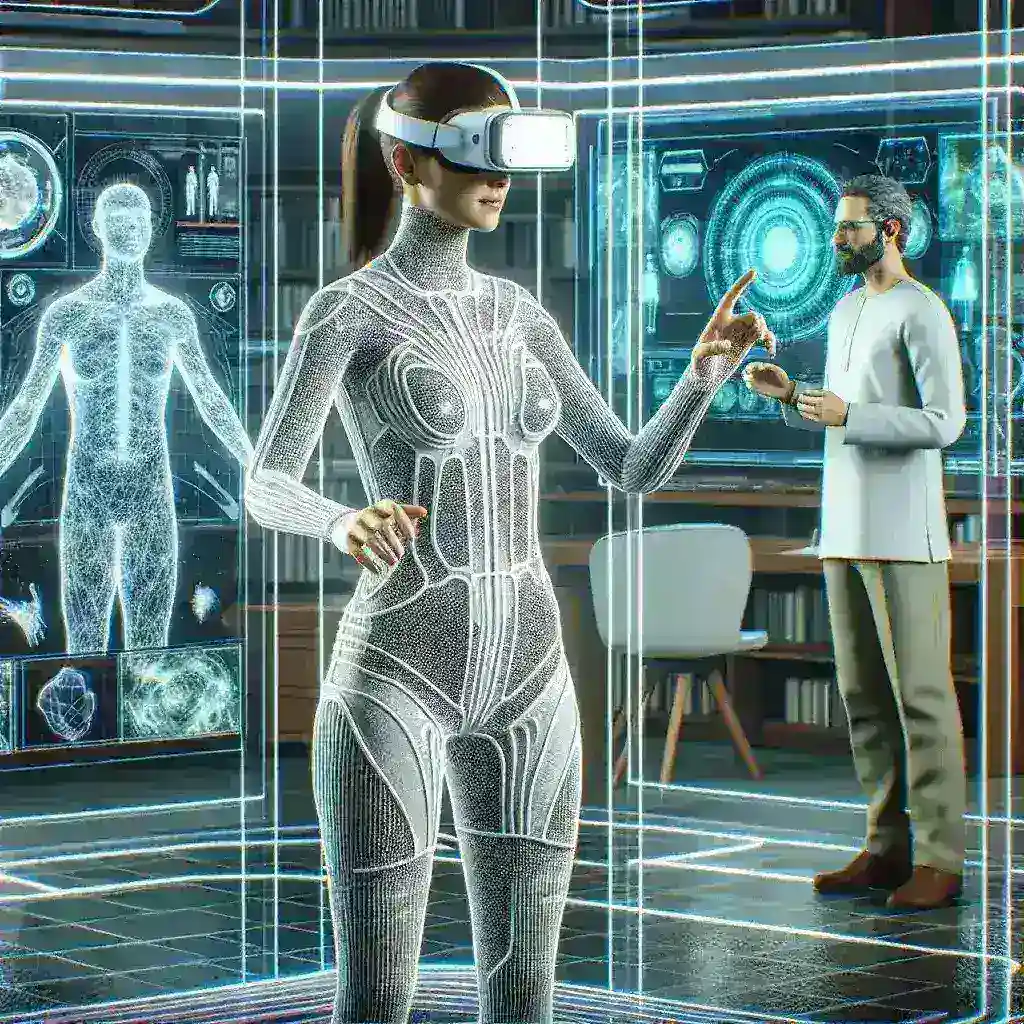Introduction
In the realm of virtual reality (VR), the sensory experience is paramount. While visual and auditory elements have long been at the forefront of immersive technology, a new player has emerged: haptic feedback suits. These innovative garments are designed to provide users with physical sensations that closely mimic the virtual environments they inhabit. With the ability to touch, feel, and even experience pressure in a digital landscape, haptic feedback suits are transforming the way we interact with technology.
The Evolution of Haptic Technology
The concept of haptic feedback is not new. Its roots can be traced back to the early days of video gaming, where rumble packs enhanced the experience by providing tactile sensations in response to actions on screen. However, the technology has evolved significantly over the years. From simple vibrations to complex feedback systems, haptic technology has advanced to create a more immersive connection between the user and the digital world.
Historical Context
The development of haptic feedback can be delineated into several key stages:
- Early Innovations: In the late 20th century, haptic feedback was primarily limited to gaming consoles and mobile devices, with basic vibration systems being the norm.
- Research and Development: As VR gained popularity in the 1990s and early 2000s, researchers began to explore the integration of haptic feedback in virtual environments.
- Commercial Applications: The 2010s saw the emergence of haptic feedback suits and gloves, designed for use in gaming, training simulations, and therapeutic applications.
What are Haptic Feedback Suits?
Haptic feedback suits are wearable devices equipped with various actuators that provide tactile feedback to the user. These suits can simulate a range of sensations, including touch, pressure, vibration, and temperature, allowing users to feel as though they are interacting with the virtual world in a more meaningful way. The suits can be used in various virtual environments, from gaming to training simulations, and even in therapeutic settings.
How Haptic Feedback Suits Work
At the core of haptic feedback suits are several key components:
- Actuators: Devices that convert electrical signals into mechanical vibrations, allowing users to feel different sensations.
- Wearable Sensors: These track the user’s movements and provide feedback that corresponds to their actions in the virtual environment.
- Software Integration: The haptic feedback system is integrated with the VR software, ensuring that the feedback corresponds accurately to the virtual actions being performed.
Types of Haptic Feedback Suits
Haptic feedback suits come in various forms, tailored to different applications:
- Full-body Suits: These suits cover the entire body, providing a comprehensive haptic experience. They are often used in gaming and training simulations.
- Upper Body Gloves: Designed for more precise haptic feedback, these gloves allow for fine motor control and are often used in virtual design or medical training.
- Lower Body Wearables: These focus on the legs and feet, enhancing locomotion feedback and providing a more immersive experience in virtual environments.
The Impact of Haptic Feedback Suits on Virtual Reality
Haptic feedback suits have profound implications for various fields:
Gaming
In gaming, haptic feedback suits provide players with an unprecedented level of immersion. Imagine feeling the impact of a virtual explosion or the sensation of raindrops falling on your skin while traversing a digital landscape. This heightened sense of presence can create more engaging and memorable gaming experiences.
Training and Simulation
In professions such as medicine, aviation, and military training, haptic feedback suits offer realistic experiences that can enhance learning outcomes. Trainees can practice procedures or combat scenarios in a controlled environment, receiving immediate feedback on their performance.
Therapeutic Uses
Haptic technology has also found applications in therapy, particularly for patients with sensory processing disorders or rehabilitation needs. These suits can provide stimulation that helps patients reconnect with their physical sensations, aiding in recovery and adaptation.
Future Predictions for Haptic Feedback Technology
The future of haptic feedback suits looks promising, with several trends on the horizon:
- Increased Customization: Future suits are expected to offer more customizable feedback options, allowing users to tailor their experience according to personal preferences.
- Advanced Sensory Feedback: Emerging technologies may enable even more sophisticated feedback, including simulating temperature changes, textures, and more.
- Broader Adoption: As the technology becomes more affordable and accessible, we can expect to see haptic feedback suits integrated into everyday applications, from social media to remote collaboration.
Pros and Cons of Haptic Feedback Suits
Pros
- Enhanced Immersion: Haptic feedback suits provide a level of realism that enhances the overall experience in virtual environments.
- Training Benefits: They offer valuable training tools for various professions, improving retention and skill acquisition.
- Therapeutic Applications: Haptic feedback can aid in rehabilitation and sensory therapy, providing benefits to individuals with disabilities.
Cons
- Cost: High-quality haptic feedback suits can be expensive, limiting their accessibility to many users.
- Physical Limitations: Users may experience discomfort or fatigue from prolonged wear, restricting the duration of engagement.
- Learning Curve: Integrating haptic feedback into existing applications may require additional training for effective use.
Conclusion
Haptic feedback suits are at the forefront of creating truly immersive virtual environments. As technology continues to advance, we can expect these suits to play a significant role in how we interact with digital worlds. Whether in gaming, training, or therapy, haptic feedback suits are set to redefine our experiences, making them more engaging and impactful. The future holds endless possibilities as we continue to explore the depths of virtual reality and the sensations it can provide.

